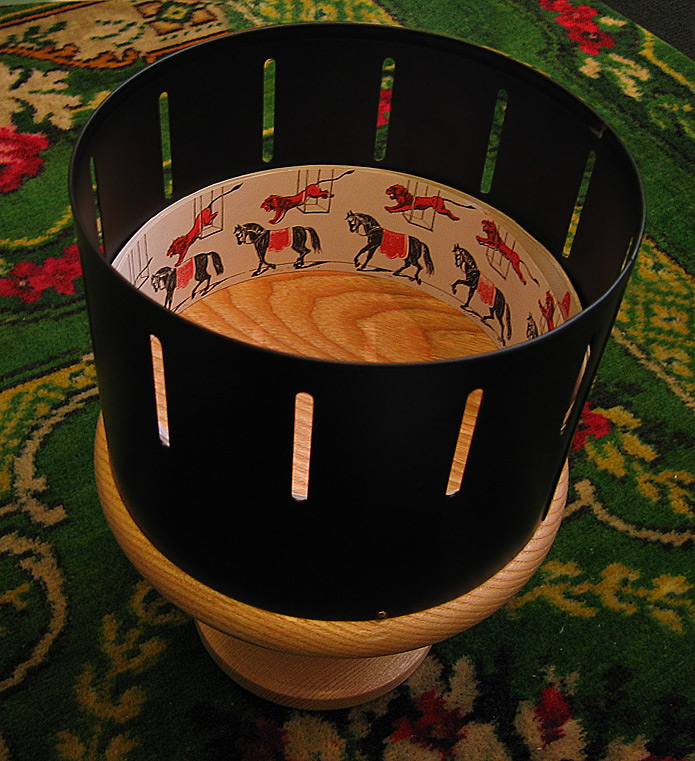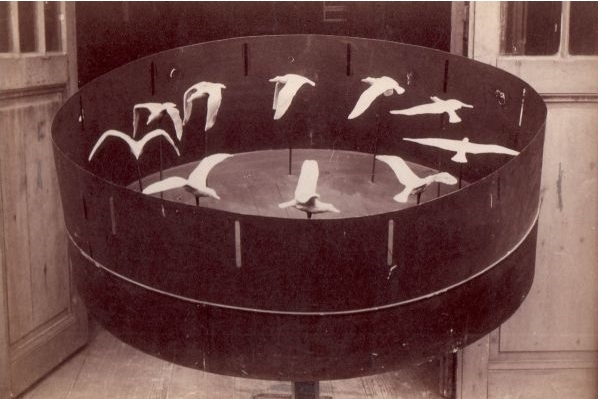Zoetrope (1833/1866) - precursors of film and movie
The Zoetrope is a cylindrical device invented in 1833 by William George Horner and later improved upon by Henry R. Heyl in 1866. The Zoetrope is considered to be one of the earliest precursors to film and movie technology, and is an important milestone in the development of visual entertainment.
The basic principle behind the Zoetrope is simple: a cylindrical drum with slits in its sides is spun, and a series of images are placed inside the drum. As the drum spins, the slits allow the viewer to see the images in rapid succession, creating the illusion of motion. This basic idea of rapidly displaying a sequence of still images to create the illusion of motion is the fundamental concept behind film and movie technology, and the Zoetrope was one of the first devices to demonstrate this principle.
The Zoetrope was a popular form of entertainment in the late 19th century, and many variations of the device were created during this time. Some Zoetropes were designed to be tabletop devices, while others were large, floor-standing devices that could accommodate multiple viewers. There were also portable versions of the Zoetrope that were designed for travel and use in public spaces.
One of the most notable aspects of the Zoetrope is its versatility. The device could be used to display a wide range of images, from simple animations to complex scenes with multiple characters and objects in motion. This versatility made the Zoetrope a popular choice for both amateur and professional animators, who used the device to create short films and animated sequences.
In addition to its versatility, the Zoetrope also had a significant impact on the development of film and movie technology. The concept of rapid image display that was demonstrated by the Zoetrope was further developed by other inventors and filmmakers, who used the principle to create motion picture cameras and projection systems. The first motion picture cameras were essentially spinning drums with slits that allowed light to pass through and record a series of still images on a strip of film. These early cameras were based on the principle of the Zoetrope, and they laid the foundation for the development of modern film and movie technology.
The Zoetrope also had an impact on the way that people thought about visual entertainment. Before the invention of the Zoetrope, people were used to looking at still images, such as paintings and drawings. The Zoetrope challenged this way of thinking by demonstrating the potential of rapid image display to create the illusion of motion. This was a profound change in the way that people perceived visual entertainment, and it paved the way for the development of film and movie technology.
Despite its significance, the Zoetrope was eventually replaced by other forms of visual entertainment, such as motion pictures and television. The rise of these new forms of entertainment led to a decline in the popularity of the Zoetrope, and the device is now a historical curiosity, remembered as a precursor to the modern forms of visual entertainment that we take for granted today.
In conclusion, the Zoetrope was a groundbreaking invention that demonstrated the principle of rapid image display and laid the foundation for the development of film and movie technology. Its versatility and impact on the way that people thought about visual entertainment make the Zoetrope a significant milestone in the history of visual entertainment, and it remains an important part of the legacy of film and movie technology.




Comments
Post a Comment